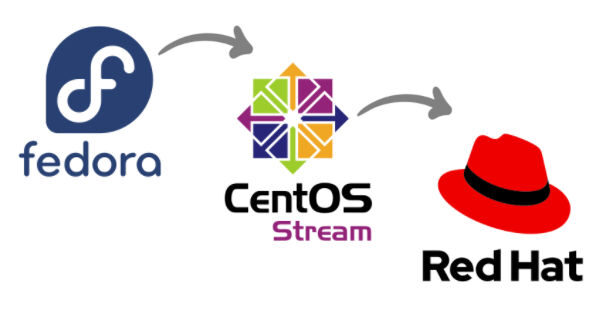To start with RedHat is most known for its association with RedHat Enterprise Linux and is the primary sponsor of Fedora Project and CentOS Stream along with many other open source projects. Redhat Inc. was acquired by IBM in 2019 and is now operated as an independent subsidiary of IBM.
Why would the same company want to maintain 3 Linux operating systems?
To start with, all the 3 of these Linux distributions use the RPM (Redhat Package Manager) packages. Most of the packages can be used interchangebly amongst these Linux distributions. So in order to understand the basic difference between them, we need to first understand the difference between a community distribution (commonly called as distro) and an enterprise distribution.
Community vs enterprise distro
Linux as we all know is a free and open source operating system. Which means anybody who understands it well enough can develop features into a distro and add it to the repository for it to become a part of the upcoming release. This ensures that you always have the bleeding edge features in community based distro. However, it does come with a drawback, that the new features may not have been tested well, so an updated would be soon on its way. This causes stability issues from an enterprise perspective. Enterprises prefer to have fixed periodic update cycles with a long term support (LTS). This is where comes the enterprise Linux distro. Enterprise Linux distros are tested with wider audience, features are stabilised and only then are added to the final release.
Fedora release cycle
Fedora Linux falls under the category of community Linux distro. They have a release cycle of around 6 months with the support for the current version being valid till a month after the release of the next version.
CentOS Stream release cycle
CentOS release cycle matches with that of Redhat releases. The major version number matches that of the major release of Redhat, while the minor version number being the actual release update. Starting with CentOS Stream, it is now an upstream Linux distro to Redhat.
Redhat release cycle
Redhat is a commercial enterprise linux distro with fixed release and support cycles. Red Hat releases a new point version of a particular series every year and a major version after approximately 5 years. It offers 10-year life cycle support so you can better support long-term apps.
Upstream vs Downstream distro
The development and release cycle of a Linux distro can be compared also whether it is upstream to Redhat or downstream to Redhat.
The bleeding edge upstream is Fedora. Fedora matures into CentOS stream. CentOS Stream is a “continuously delivered distro that tracks just ahead of Red Hat Enterprise Linux development, positioned as a midstream between Fedora and Redhat distros. With CentOS only recently moving to upstream releases to Redhat, it will be worth keeping a watch on how often do the releases happen in CentOS Stream.
Since in upstream, CentOS Stream lies between Fedora and Redhat, it is expected to have releases more often than Redhat, however lesser often as compared to Fedora. CentOS Stream 9 releases will give a better picture towards this.
And then there are downstream distros which were launched after Redhat announced the change in the stance of CentOS from the earlier downstream distro to upstream, from its CentOS Stream. These distros are Rocky Linux (by the founder of CentOS Project) and Alma Linux (from the house of CloudLinux). They are also gaining wide spread popularity, as they track close to Red Hat Enterprise Linux, are as stable as Red Hat Enterprise Linux and are free to use.
You can read more about whether to opt for CentOS Stream, Rocky Linux or AlmaLinux before making up your mind for your next installation.


Leave a Reply